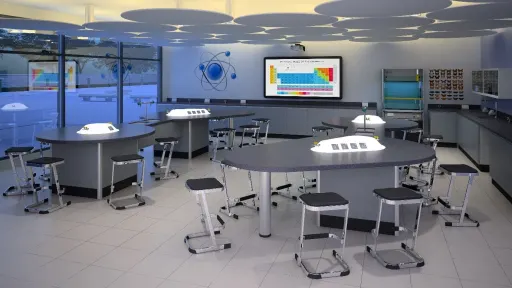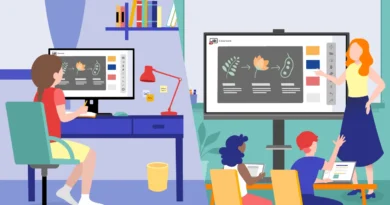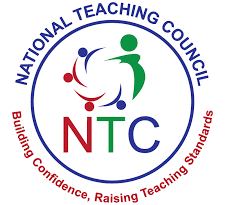The Impact of Technology on Education: Shaping the Future of Learning 2024 and beyond
Transforming Education: The Impact of Technology on Learning in 2024 and Beyond
Introduction
Technology has revolutionized nearly every aspect of our lives, and education is no exception. From smart classrooms to personalized learning experiences, technology is transforming how students learn and how teachers teach. This post explores the impact of technology on education and various ways technology is enhancing education, the impact on student performance, and the current and future trends in educational technology.
Smart Classrooms: The Future of Learning Spaces
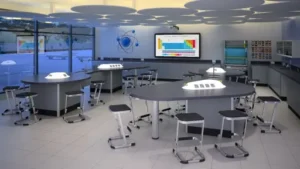
Gone are the days of chalkboards and overhead projectors. Today’s smart classrooms are equipped with interactive whiteboards, digital projectors, and internet-connected devices that make learning more engaging and interactive. These tools allow teachers to present information in dynamic ways, catering to different learning styles.
For instance, Ms. Smith, a history teacher, uses virtual reality (VR) to take her students on immersive tours of ancient civilizations. “Instead of just reading about the pyramids, my students can explore them virtually. It’s like bringing history to life!” she says. This kind of engagement can make learning more memorable and enjoyable for students.
Personalized Learning: Tailoring Education to Individual Needs
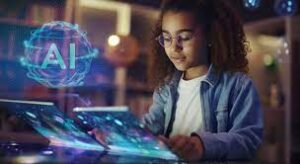
One of the most significant benefits of technology in education is the ability to personalize learning. Adaptive learning platforms use algorithms to assess students’ strengths and weaknesses, providing customized content that targets their specific needs. This approach ensures that no student is left behind.
Take the example of Maxwell, a 7th-grade math student who struggled with algebra. With the help of an adaptive learning app, John received additional practice problems and instant feedback, allowing him to master the concepts at his own pace. “I used to dread math class, but now I actually look forward to it,” Maxwell says.
Collaboration and Communication: Breaking Down Barriers
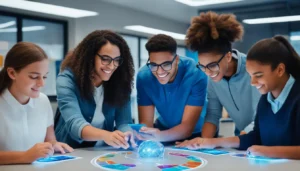
Technology has also made it easier for students and teachers to collaborate and communicate. Online platforms like Google Classroom and Microsoft Teams facilitate real-time collaboration on projects, regardless of students’ physical locations. This is particularly beneficial for group work and peer-to-peer learning.
Mrs. Lee, an English teacher, uses these platforms to create collaborative writing assignments. “Students can work on a story together, edit each other’s work, and provide feedback instantly. It’s amazing to see their creativity and teamwork in action,” she notes.
Access to Information: Learning Beyond the Classroom

The internet has opened up a world of information that was previously inaccessible. Students can now access vast libraries of resources, including e-books, academic journals, and educational videos, from anywhere. This access democratizes education, providing opportunities for lifelong learning.
Sam, a high school student interested in computer science, taught himself to code using online tutorials and courses. “I never thought I’d be able to learn programming on my own, but the resources available online are incredible. It’s like having a global classroom at your fingertips,” he says.
ICT Tools: Enhancing Teaching and Learning
Various Information and Communication Technology (ICT) tools are being used to enhance teaching and learning:
- Interactive Whiteboards: Tools like SMART Boards allow for interactive lessons where students can engage directly with the content.
- Learning Management Systems (LMS): Platforms such as Moodle, Blackboard, and Canvas help manage coursework, track student progress, and facilitate communication between students and teachers.
- Educational Apps: Apps like Khan Academy, Duolingo, and Quizlet offer supplementary learning materials and practice exercises for various subjects.
- Online Assessment Tools: Tools like Kahoot! and Socrative make quizzes and assessments fun and interactive, providing immediate feedback to students.
Impact on Student Performance
The integration of technology in education has shown a significant impact on student performance positively:
- Engagement: Interactive tools and multimedia content capture students’ attention and make learning more engaging.
- Retention: Visual and interactive content can improve information retention and understanding.
- Self-paced Learning: Students can learn at their own pace, which is especially beneficial for those who may need more time to grasp certain concepts.
- Collaboration: Technology facilitates group work and communication, enhancing collaborative learning experiences.
Current and Future Trends in Educational Technology
Current Trends:
- Gamification: Incorporating game elements into learning to make education fun and motivating.
- Blended Learning: Combining traditional classroom methods with online educational materials and interactive activities.
- Flipped Classroom: Students watch lectures at home and engage in interactive activities in class.
Future Trends:
- Artificial Intelligence (AI): AI-driven tutors and personalized learning assistants that adapt to individual learning needs.
- Internet of Things (IoT): Smart classrooms where all devices are interconnected, providing a seamless learning experience.
- Augmented Reality (AR): Enhancing real-world experiences with digital overlays to provide immersive learning environments.
- Blockchain Technology: Secure and transparent systems for tracking academic records and certifications.
Technology in education is not just a trend; it’s a transformative force that’s reshaping how we learn and teach. By embracing digital tools and innovative solutions, we can create engaging, personalized, and accessible learning experiences for all students. As we inspire the next generation to harness the power of technology, we are paving the way for a brighter, more connected future.
So, let’s welcome this digital revolution in education with open arms and curious minds. After all, the future of learning is here, and it’s more exciting than ever.
Embrace the change, inspire the future, and let’s make learning an adventure worth embarking on!
